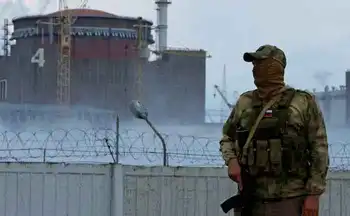Heat-related demand on electricity causes Detroit power outages
DETROIT - Sections of downtown Detroit lost power Thursday after high demand from air conditioning during the previous daysÂ’ 90-degree heat caused parts of the cityÂ’s aging municipal power system to fail, knocking out electricity to about a half-dozen government buildings, officials said.
The spotty outages forced hundreds of people to evacuate the Coleman Young Municipal Center, the McNamara federal building, the county courthouse, Cobo Center and some buildings at Wayne State University and a community college. Traffic lights were out in certain areas but working in other parts of the downtown district. The city’s People Mover, an elevated train with a small route downtown, lacked power — yet police headquarters was operating normally.
Mayoral spokeswoman Karen Dumas told The Associated Press she was at her desk in the municipal building typing an email when the blackout occurred at 2:30 p.m. Dumas said the outage was due to extreme power demand in the last few days for air conditioning and city officials had been warned a brownout could occur.
“Certainly the system is old and we can’t deny that. Over the past couple days, usage was higher than normal but we monitor the system and we knew that and we asked our high usage consumers to cut back,” she said.
Heat also overwhelmed the cityÂ’s system last July, shutting down power to parts of downtown for two days. City officials estimated ThursdayÂ’s power could be restored between 10 p.m. and early Friday afternoon.
Even though temperatures were only in the upper 70s on Thursday, it had topped 90 degrees Tuesday and Wednesday.
Detroit’s Chief Operating Officer Chris Brown said the outages occurred after one of five transmission lines from a power station on the city’s southwest side went down Wednesday, and two more went down Thursday. “Heat is the cause,” he said.
DTE Energy Co. generates the power used by the Detroit municipal power system and sells it to the city, said DTE spokesman Alejandro Bodipo-Memba. He said the power failure happened in the municipal portion of the network and was not a failure of the supply system.
The outage did not affect most customers in the city served directly by DTE.
James Hollins, of Flint, a contract employee in information technology, said he couldn’t get back in the municipal building after leaving for lunch because of the power outage. He worried about whether he lost valuable information on his computer at his work station. As a contract employee, he said, there’s “no work, no pay. That’s a downer.”
The municipal center consists of two towers, a 20-story section that includes county courts and a 14-story section that includes the cityÂ’s executive and legislative offices.
Wayne State University spokeswoman Cheryl Yurkovich said she didnÂ’t know how many buildings were affected, but classes were canceled Thursday afternoon and evening. She said they are expected to resume Friday.
Related News

5 ways Texas can improve electricity reliability and save our economy
DALLAS - The blackouts in February shined a light on the fragile infrastructure that supports modern life. More and more, every task in life requires electricity, and no one is in charge of making sure Texans have enough.
Of the 4.5 million Texans who lost power last winter, many of them also lost heat and at least 100 froze to death. Wi-Fi stopped working and phones soon lost their charges, making it harder for people to get help, find someplace warm to go or to check in on loved ones.
In some places pipes froze, and people couldn’t get water to drink…




